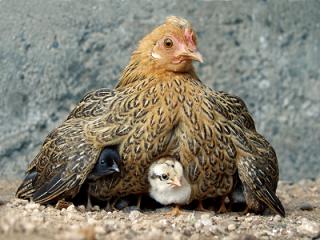At last! One of the holdouts against humane treatment of egg-laying chickens (United Egg Producers) has agreed to work with (instead of against) the Humane Society of the United States to advocate for laws governing the egg industry.
You would never treat an animal the way the biggest egg producers do (cramped living, amputation of beaks, ammonia in henhouses, starvation). In California, we passed hen welfare Proposition 2 in 2008, but it doesn’t go into effect until 2015. In the meantime, if you eat eggs you could look for organic or humanely raised ones, watching out for meaningless terms like “free-range,” which may or may not mean the chickens really have access to outdoors.
Or you could even keep a few chickens yourself! These days, it’s not unusual for urban or suburban households to keep a few chickens. You can learn a lot here (backyardchickens.com) or here (http://www.garden.org/regional/report/arch/inmygarden/3704). The Institute for Animal Husbandry in Oakland (http://www.iuhoakland.com/animals.html) also offers classes – check their website for the next one.
Of course, that doesn’t mean your eggs would be free. You’ll have to set up fences to protect the hens from raccoons and foxes, not to mention your own pets, and to provide some food in addition to your table scraps. Check your town’s ordinances to see whether it’s legal where you live.



